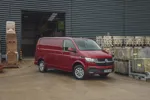Businesses attempting to simply take international fleet policies from Western Europe and copy them will run into serious difficulties, warned Jorn Deichmuller, international purchasing manager for Solvay.
He has spent the past few years creating an international fleet policy for Central and Eastern Europe and explained some of the unique challenges he faced.
He found that even writing a unique policy to match the demands of Central and Eastern Europe (CEE) could founder because of stiff resistance from employees in the affected countries, he warned.
Deichmuller, whose company runs 7,000 vehicles worldwide and 5,000 in 32 European countries, with 1,448 in CEE, said: ‘It is not as simple as copying your policy from Western Europe to other pan-European agreements. In addition, countries won’t change without acceptance, you can’t force these things through.
‘You also need to be flexible, because what might be a good solution for the Czech Republic might not be good for Russia.
‘It would be great to have a single car policy for CEE and the rest of Europe, but I think that is a long way away.’
Fleet decision-makers can feel like they are starting from scratch because in some CEE countries the knowledge of local management relating to methods of funding popular throughout the rest of Europe is almost non-existent.
Speaking at the Fleet Europe Forum on CEE, held in Prague, he added: ‘I was astonished by the low level of internal and external knowledge in this region when we started working on this project three to four years ago. Full operational leasing is not always a common practice, so it takes a day just to explain the consequences and that means much more internal work for us.’
This meant that knowledge of funding solutions such as contract hire was basic and needed to be explained in detail to all the senior managers in each country so they knew what they were committing to.
As a result, he warned that introducing basic common policies would take three to four months per country and up to four years for the whole CEE.
To make the biggest impact in the shortest period of time, Solvay focused initially on the Czech Republic, Russia, Poland, Hungary and Romania.
When dealing with Russia is can be an even larger problem, because for national fleets, some vehicles are being operated so far from Moscow that it is several hours flight away.
But even then a company’s problems are not over, as vehicle choice is a contentious issue, he warned.
‘In CEE the important of the company car to sales people is even greater than somewhere in Germany,’ he said, ‘so you might get a sales person in Russia with a VW Touareg, while the equivalent managers in Western Europe get an Audi A4. That can cause real problems in companies.’
When dealing with leasing companies, there are also unique issues, such as a lack of competition as many firms have yet to expand into CEE, while extremely low staff internal staff costs put a question mark over the benefits of outsourcing.
Deichmuller added: ‘Staff costs are very low, so you have more of them and they have time available to carry out the tasks that might be outsourced in Western Europe. Therefore, a decision to outsource doesn’t save much cost anyway.’
Traditional issues still remain, though, such as balancing the demands of HR with the financial requirements of the company, but Deichmuller felt that after much hard work he had reached an important stage in the development of his new fleet policy.
Solvay now has 95% of its vehicles operated through leases, works with six car manufacturers, instead of 38 five years ago, and has three leasing companies, instead of 25.
New lessors have been introduced in the Czech Republic, Slovakia and Hungary with Poland under discussion, while Romania is expected to change its choice list and introduce leasing soon, along with Russia, but there are still some open issues in Ukraine.
Deichmuller added: ‘We have introduced common policies, but sometimes you just have to accept an individual solution because of the market.’
Local contacts key to Solvay operation
DESPITE the difficulties of introducing common policies, Solvay now has a clear structure in place.
The fleet is handled by the Solvay Corporate Purchasing Network, there is one international purchasing manager, who negotiates global contracts and one national fleet manager per country.
To recognise the differing demands of each country, local contracts for each car are managed by the national fleet manager.
Management for the CEE region is also centralised, but there is some flexibility in each of the countries to work within the policies that have been set out.
The Solvay Group
Founded: 1863
Headquarters: Brussels
Employees: 30,000
Sales 2005: €8.5 billion
Fleet worldwide: 7,500
Fleet EU: 5,000
Fleet CEE: 1,448
Fleet management in CEE
Work hard on the issues and react flexibly
One car policy for the CEE region
Use international contracts
Change suppliers if necessary
Work with lessors
Allow individual national solutions where needed
Don’t try to copy your Western Europe policy – it won’t work
Don’t change without the support of each country and local management
Don’t try to change everything at once. Work steadily country by country
Don’t rush – find the right solution over time, rather than changing and then correcting mistakes
Source: Solvay















Login to comment
Comments
No comments have been made yet.